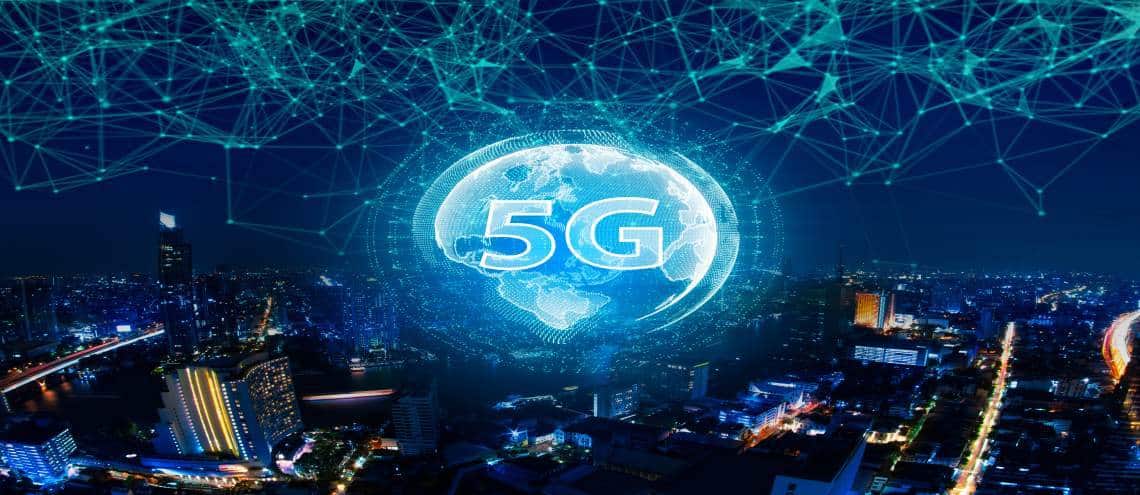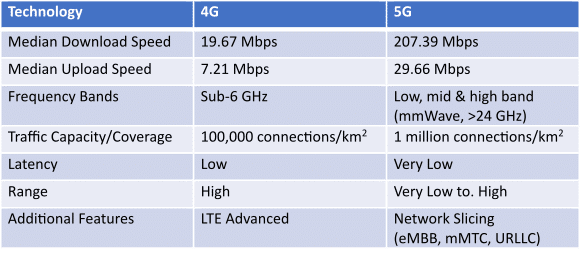

In recent decades, a multigenerational evolution in mobile technology has taken place. From 1G in 1979 by NTT up to the modern transition towards 5G, there is no question that wireless networks have formed the bedrock on which technology thrives.
Both consumers and businesses must be ready for the global shift towards 5G to comprehend the wide scale opportunities it fully enables. With 5G in a prime position to upgrade the dynamics of digital transformation, we speak to Nor Hisham, General Manager for Enterprise Mobile at TM One to demystify 5G concepts and how it compares to its predecessors.
A fundamental understanding of this technology, will launch Malaysia into the heart of the digital ASEAN.
5G vs 4G
As 5G supersedes 4G LTE, it must not be confused with the 5GHz WiFi on our mobile devices. The latter is a short-range frequency used in modern WiFi systems, while 5G is an all-new cellular standard.
According to GSMA, the worldwide median download speed using 5G was 954% faster, and upload speeds were 311% faster than 4G as tested during Q3 2020.[i] Additionally, 5G supports over 100 times more traffic capacity while supporting up to 1,000 more devices per meter than 4G.[ii] The higher bandwidths also prevent patchy services, especially in hot zones, enabling more connected devices. In short, 5G is much, much faster than 4G.
Imagine downloading a two-hour HD movie in roughly 10 seconds or going shopping with augmented reality … simply unbelievable. Yet, all of it is possible with the promise of 5G, as seen in its speed. However, the catch is that gigabit-plus download speeds depend on location, operator spectrum range, and network traffic.
5G also uses higher radio frequencies (>24 GHz) that are less occupied to supply more information at faster rates. These previously unused bands offer much lower latency (<1 ms) and greater flexibility at the cost of the coverage area. However, information sent over large distances are susceptible to line-of-sight and blockage such as building structure, vegetation, and rainfall as mmWave can only travel a few hundred meters.
As many arguments have highlighted the safety of 5G, science has proven that the technology poses no danger; the World Health Organisation (WHO) even deems the effects of low-level electromagnetic fields on human health as ‘very minimal’.[iii]

What is needed to roll out 5G?
Industry participants, including governments, service providers, vendors, and manufacturers at large, must collaborate to release the full potential of 5G. New infrastructure requirements are mandatory to make up for the mid & high bands spectrum usage in 5G. Hence, we see 5G standalone (SA) and non-standalone alone (NSA) deployment models for 5G networks to operate with or without relying on 4G infrastructure.
Deployment strategies for 5G are fundamentally different from legacy networks in terms of existing infrastructure. First, it needs restructuring to create space for denser deployment of small cells in urban and rural areas, focusing on street levels and the insides of buildings rather than populating rooftops and tall structures.
In 5G, timing technology is as critical as the developments in processors and radio frequency filters. As mobile networks rely heavily on the synchronization between radios, maintaining the stability of radiofrequency timing will dictate the blueprint for 5G network components. The orthogonal frequency-division multiplexing (OFDM) has become the standard format for 5G radios to help modulate digital signals across various channels to reduce interference.[iv]
5G also use an air interface to create new ways of interconnectivity ― device-to-device and multi-hop mesh methods. While it natively supports all spectrum types (licensed, unlicensed, shared) and bands (low, mid, high), network operators must redesign testing and R&D to ensure widespread coverage and adoption in various industry use cases.
5G applications
The potential of 5G certainly excites many opportunists. As a result, businesses and governments are already reimagining existing models and accelerating impactful industrial applications.
Generally, three classes of features can be associated with 5G: enhanced mobile broadband (eMBB), massive machine-type communication (mMTC) and ultra-reliable low latency communication (uRLLC). Each of these features is unique and instrumental to the development within the industry verticals adopting this digital revolution.
eMBB, a straightforward improvement of the 4G mobile network, providing more significant data and bandwidth capabilities alongside latency improvements. This use case category revolves around more data-reliant applications, such as AR/VR media, cloud UltraHD, 8K and 360-degree video streaming, and immersive gaming and event experience. Consumers and enterprises will most likely experience enhanced connectivity across all connected devices in the early phases of 5G rollouts before going beyond more transformational categories.
mMTC is one of them, focusing on enabling IoT applications that leverage the deployment of low data transmitting devices on a massive scale. Supporting a highly dense connection of connected equipment also open doors for plenty of new opportunities — more intelligent homes, cities, traffic lights, grids, meters, and factories.
The last category of use cases is arguably the most anticipated application of 5G. Being dubbed as the underlying feature for massive connectedness, ultra-reliable low latency communications (uRLLC) cater to latency-sensitive devices. Transmitting large amounts of data with minimal delay enables instantaneous wireless networks (1ms or less). This instantaneous level is a game-changer — fuelling futuristic fields of use, including autonomous driving, remote diagnosis & robotic surgery, industrial automation, and drone deliveries.
5G for the future
Malaysia intends to establish 5G as Digital Nasional Berhad (DNB) plans on implementing 5G on the tail-end of 2021, working towards a 40% coverage by the end of 2022 and above 80% by 2024.[v] Ernst & Young Consulting (EY) expects 5G to increase Malaysia’s GDP by 5% (RM 122 billion) by 2030 and create over 148,000 jobs.[vi]
Nonetheless, Malaysia will undoubtedly need to overcome several challenges before leveraging the full potential of 5G to build its regional competitiveness. Whether for consumers’ enhanced mobile broadband or industries/enterprises’ uRLLC applications, we at TM One will fully support the operators and users in our pursuit of levelling up digital experiences with 5G in Malaysia.
Sources:
[i] https://www.gsma.com/membership/resources/massive-expansions-and-huge-improvements-in-speed-the-worldwide-growth-of-5g-in-2020/
[ii] https://www.qualcomm.com/5g/what-is-5g
[iii] https://www.who.int/news-room/q-a-detail/radiation-electromagnetic-fields
[iv] https://www.5gtechnologyworld.com/the-basics-of-5gs-modulation-ofdm/
[v] https://www.theedgemarkets.com/article/cover-story-5g-debate
[vi] https://www.theedgemarkets.com/article/digital-nasionals-single-wholesale-5g-network-increase-gdp-5-or-rm122b-2030-—-report